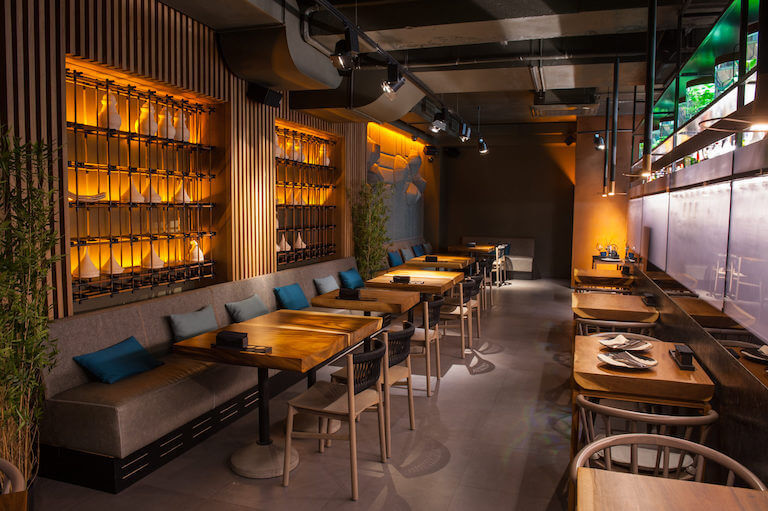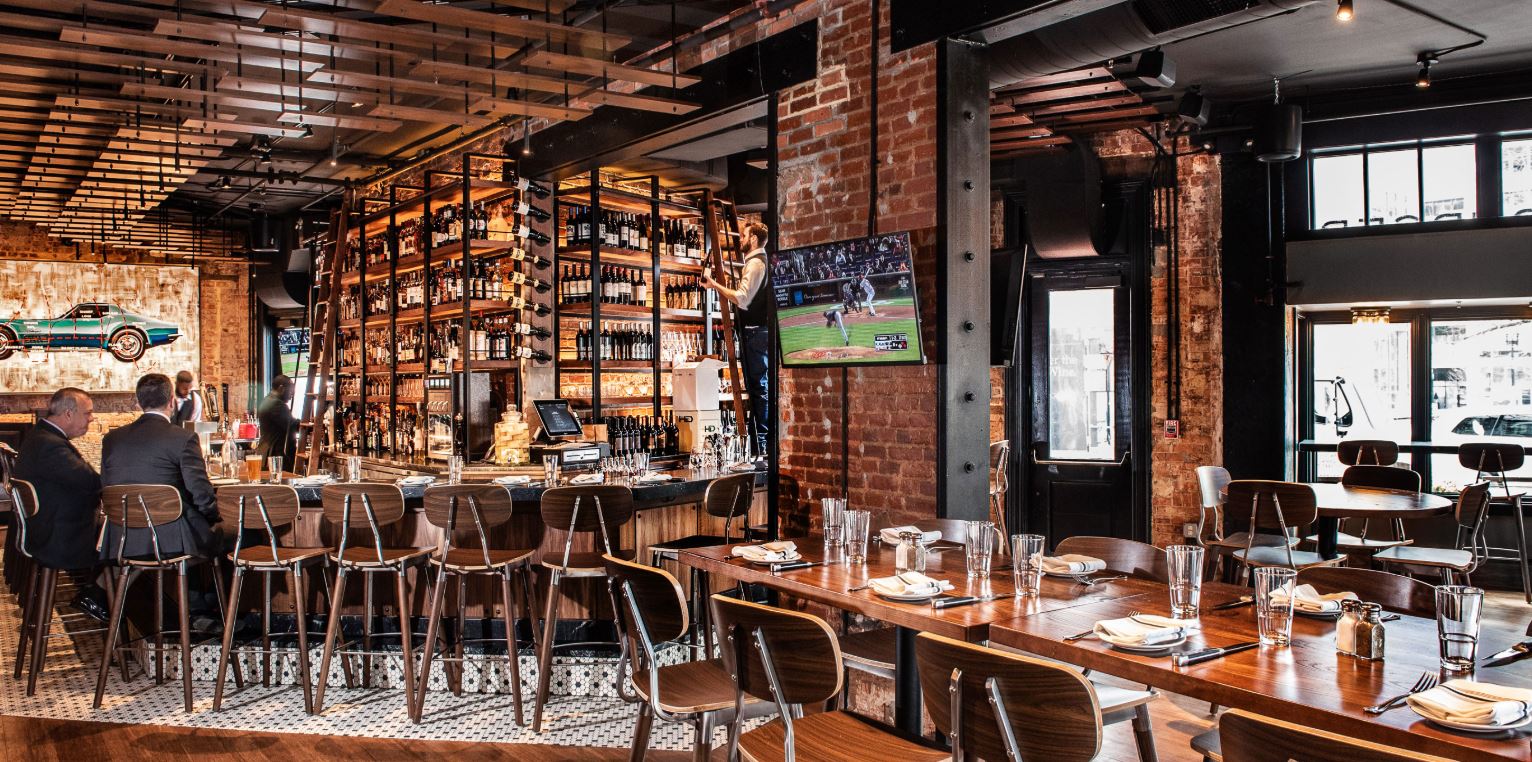Best Asian Restaurant Islamabad: Experience Flavors from Throughout Asia
Best Asian Restaurant Islamabad: Experience Flavors from Throughout Asia
Blog Article
Savor Genuine Eastern Cuisine With a Pan-Asian Spin for a Cooking Experience
Embarking on a cooking journey with authentic Eastern cuisine, boosted with a Pan-Asian twist, offers a distinct possibility to explore the rich tapestry of flavors that define the area's varied cooking practices. As you consider these attracting meals, take into consideration the cultural narratives and historic impacts that form them, each bite supplying a tale waiting to be uncovered. pan asian dining Islamabad.

Exploring Pan-Asian Tastes
In the world of worldwide gastronomy, Pan-Asian food attracts attention for its amazing diversity and the unified interaction of flavors from numerous Asian societies. This culinary strategy celebrates the rich traditions and special ingredients discovered across the continent, creating a tapestry of tastes that is both satisfying and intriguing. Key to Pan-Asian food is its capacity to stabilize contrasting tastes-- sweet, salty, spicy, and sour-- while highlighting the quality and top quality of each ingredient.
From the umami-rich soy sauce of Japan to the fiery chili peppers of Thailand, Pan-Asian food offers a comprehensive combination of flavors. These elements are typically combined in inventive means, enhancing dishes with layers of intricacy. For example, using fragrant herbs such as lemongrass and cilantro, usual in Vietnamese and Thai cuisine, adds a refreshing brightness to dishes, while the unification of coconut milk provides a velvety, rich texture.
The focus on fresh fruit and vegetables and fragrant spices guarantees that each dish is not only a feast for the palate but also for the senses. Pan-Asian food welcomes diners to get started on a culinary journey, checking out the vast and varied landscapes of Asian gastronomy with every bite.
Blend Recipes to Attempt
While Pan-Asian cuisine is commemorated for its conventional tastes, the modern culinary landscape is significantly welcoming combination dishes that mix these timeless components with influences from other areas. This innovative strategy not just honors the abundant heritage of Eastern cookeries yet likewise introduces unique taste experiences that attract contemporary tastes buds.
A prime example of such a combination meal is the Korean-Mexican taco, where marinaded bulgogi beef is wrapped in a warm tortilla, topped with kimchi and a zesty gochujang-infused salsa. This mix weds the bold, full-flavored flavors of Korea with the dynamic, fresh elements of Mexican cuisine. Similarly, sushi burritos have actually gotten popularity, joining together the delicate artistry of Japanese sushi with the hearty, hand-held benefit of a burrito, typically featuring blend active ingredients like tempura shrimp and avocado with a drizzle of wasabi mayo.
Another noteworthy meal is Thai curry ramen, which instills the velvety, fragrant flavors of Thai curry into the reassuring brew of traditional Japanese ramen, developing a harmonious blend that entices the senses. These blend recipes extend past mere uniqueness; they represent a culinary discussion between societies, urging expedition and development in the world of Pan-Asian cuisine.
Crucial Components and Spices
To genuinely appreciate Pan-Asian cuisine, one should recognize the vital active ingredients and flavors that develop its structure. This varied cooking design draws from a rich tapestry of Asian traditions, using a harmonious mix of structures and you can try here tastes.
Fragrant aspects are pivotal, with garlic, lemongrass, and ginger being ubiquitous throughout different Pan-Asian recipes. These ingredients give a fragrant base that enhances the complexity of tastes. Spices such as celebrity anise, cardamom, and cinnamon present heat and personality, echoing influences from regions like China and India.

Food Preparation Methods and Tips
Grasping the art of Pan-Asian cuisine calls for knowledge with its distinctive food preparation methods, each adding to the dynamic tapestry of tastes this culinary tradition is celebrated for. Central to these techniques is the stir-fry, a fast food preparation technique that preserves the nutritional honesty and vivid colors of active ingredients. Utilizing a wok, the stir-fry technique enables for even warm circulation, essential for accomplishing the characteristic appearance and flavor balance of Pan-Asian meals.
An additional fundamental method is steaming, specifically common in Chinese food. This gentle technique maintains the natural tastes and nutrients of components, making it excellent for seafood and vegetables. Dumplings, a beloved staple, frequently gain from steaming, causing soft, succulent structures.
Barbecuing, additionally important, gives smoky depths to dishes such as Korean bulgogi or Japanese yakitori (Instagrammable restaurants Islamabad). This strategy usually includes marinading ingredients, permitting flavors to pass through deeply prior to food preparation over an open flame or warmer
Last but not least, grasping the art of stabilizing flavors-- sweet, sour, salted, bitter, and umami-- is crucial. Properly layering these aspects can elevate a meal from common to extraordinary, using a complex and pleasing cooking experience that symbolizes the essence of Pan-Asian cuisine.
Dining Experiences Worldwide
Around the world, Pan-Asian food uses an unparalleled dining experience, celebrated for its rich tapestry of flavors and dynamic presentations. This culinary sensation has actually transcended social boundaries, capturing the hearts and tastes of food enthusiasts worldwide. In multicultural cities like go to this site New York, London, and Sydney, Pan-Asian restaurants function as melting pots where culinary traditions from Thailand, Japan, China, and beyond merge, offering diners with a diverse mix of dishes that highlight the region's diversity.
The global charm of Pan-Asian food hinges on its capacity to offer both authenticity and advancement. Cooks masterfully marry standard components such as lemongrass, soy sauce, and miso with modern methods, leading to dishes that are both refreshingly brand-new and familiar. This blend enables restaurants to get started on a culinary journey that respects heritage while accepting modernity.
In addition, eating experiences are raised through thoughtfully made settings that show the values of Pan-Asian looks. From minimal Japanese-inspired insides to lively Thai-themed rooms, each restaurant uses a special atmosphere that enhances the culinary offerings. As an outcome, patrons are not merely eating a dish but partaking in a cultural experience, making Pan-Asian eating a truly worldwide sensation.
Final Thought
The expedition of Pan-Asian food uses an extensive understanding of the detailed interaction of tastes and cooking practices across Asia. By welcoming combination recipes such as Thai curry ramen and sushi burritos, the cooking journey not only highlights the flexibility of traditional components but additionally showcases ingenious contemporary methods. This gastronomic adventure, improved by cooking techniques and vital spices, offers a distinct opportunity to appreciate the social variety and culinary artistry that define Pan-Asian food on a global scale.
Embarking on a cooking journey via authentic Oriental food, enhanced with a Pan-Asian spin, uses an unique chance to check out the abundant tapestry of flavors that specify the region's diverse culinary customs.In the world of global gastronomy, chinese buffet Pan-Asian cuisine stands out for its amazing diversity and the unified interaction of flavors from various Eastern societies. Key to Pan-Asian food is its capability to balance different flavors-- sweet, salted, spicy, and sour-- while highlighting the quality and top quality of each active ingredient.

Report this page